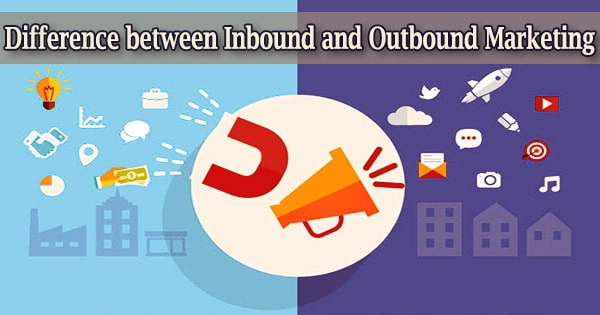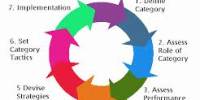Inbound and outbound marketing are two of the most popular overarching marketing methods, and each has its own set of applications, advantages, and challenges. Inbound marketing is a technique that involves creating content or using social media to raise brand recognition so that people learn about you, visit your website for more information, express interest in your product, and possibly make a purchase.
While certain outbound techniques require a lot of time and work and may not result in any leads, inbound strategies allow you to contact a larger audience of people who are easier to qualify as a lead prospect.
The primary distinction between inbound and outbound marketing is that in the former, the marketer does not impose promotional messages on customers. Rather, the client comes to receive the information on their own. As a result, the marketer does not compete for the attention of the customer.
Between inbound and outbound marketing, there are a few key distinctions. Outbound marketing entails reaching out to customers in order to pique their interest in a product. Inbound marketing, on the other hand, focuses on developing and distributing content that attracts visitors to your website.
Outbound marketing takes a more aggressive, all-encompassing approach in the hopes of converting at least some people. Inbound marketing is usually more subtle and focuses on gradually persuading a certain set of people to make a purchase.
Inbound Marketing:
Inbound marketing is the process of attracting customers’ attention to your brand and products through the creation of valuable content. It’s a form of interactive marketing. It entails establishing a relationship with prospects through relevant material and experiences.
Inbound marketing is based on the principle of creating and distributing relevant and valuable information that customers want. Visitors are drawn to your website by useful content, which draws them closer to your business, engages them, and transforms them into customers and dedicated followers.
It drives potential buyers straight to the company’s website. In order to accomplish this, the marketer tries to make it easy for customers to communicate with the company. They will also be aware of what the business is prepared to sell. These are the customers who are truly searching the internet for that product.
Outbound Marketing:
Traditional ways to outbound marketing include direct mail, cold calling, radio advertisements, television ads, trade shows, and telemarketing. Interruptive marketing is another term for it. Marketing that uses strategies to deliver a message to a large number of people in the hopes of making a sale is known as “interruption” or “push” marketing.
The marketer, as the name implies, delivers a message to the general audience. The marketer anticipates that consumers will listen to or view the advertisement and respond. In this method, the prospect will be converted into a lead, and eventually into a sale.
People who are interested in your products and services are more likely to respond to your adverts and make a purchase if you use outbound marketing. Consumers are used to outbound marketing; they expect ads in the Sunday paper or on television, and they may trust those commercials more than those delivered by modern technologies.
Key differences between Inbound and Outbound Marketing:
Inbound marketing is usually more subtle and focuses on gradually persuading a certain set of people to make a purchase. Outbound marketing takes a more aggressive, all-encompassing approach in the hopes of converting at least some people.
The pointers given below will state the difference between inbound and outbound marketing:
- Inbound marketing is a marketing strategy that emphasizes the creation of valuable content in order to attract new clients. Outbound marketing sends marketing messages to a target audience through traditional methods and mass media channels.
- The marketer employs instructive, targeted, and valuable communications approaches in inbound marketing. Outbound marketing, on the other hand, employs wide, forceful, and convoluted messaging.
- Inbound marketing involves continual and repeated message distribution. In contrast to outbound marketing, message delivery in inbound marketing is inconsistent and variable.
- Customer engagement data is readily available in inbound marketing. This information is quantitative. Traditional marketing methods, on the other hand, are used in outbound marketing. As a result, determining the client response to the instruments utilized is difficult. As a result, it is unquantifiable.
- Inbound marketing refers to marketing efforts that are designed in such a way that customers seek you out. In outbound marketing, on the other hand, customers are sought out. That is, when the message is broadcast, millions of people will see it. The company looked for those who were interested among these folks.
- The expertise is enhanced by an inbound marketing message provided to customers. There is no information or value addition from messaging in outbound marketing.
- In inbound marketing, the marketer’s role is largely passive. This is due to the marketer’s desire to wait for the leads he or she desires. In outbound marketing, on the other hand, the marketer is actively involved. This is because the marketer pursues the leads that he or she desires.
- Different tools and data are available for inbound marketing. These might help you find the correct material for your audience. However, there are no comparable tools or metrics accessible for outbound marketing.
- Inbound marketing employs marketing strategies to pique the audience’s interest. Outbound marketing, on the other hand, employs marketing strategies to force products on consumers.
- When it comes to results, inbound marketing gives the marketer exactly what he or she wants. However, with outbound marketing, the marketer is compensated based on the amount of effort put forward in selling the product or service.
- Inbound marketing, on the other hand, is focused on the customer. It focuses on the customer’s needs and wants in order to add value. Outbound marketing is focused on the firm. It focuses on the company’s requirements.
- Sending communications to those who are interested in a company’s product is known as inbound marketing. Outbound marketing, on the other hand, is sending communications to everyone, regardless of their interest.
- Communication is two-way in inbound marketing. One is for a marketer to send relevant material that the audience is interested in. The other is for the customer to provide comments, which draws in further customers. Outbound marketing, on the other hand, is a one-way street. It entails putting promotional messaging in front of clients.
- The content running cost in inbound marketing is lower than outbound marketing.
- While inbound marketing educates and entertains the viewers. But this is not with outbound marketing.
Outbound marketing is all about broadcasting a message to a large audience, but inbound marketing is more targeted. Customers visit the company’s website or speak with a customer service representative through inbound marketing. They also utilize search engines and social media to help them navigate the merchandise.
Customers are found through a variety of methods in outbound marketing. Advertisements in newspapers and magazines, television and radio advertising, cold calling, and other methods are examples.
















